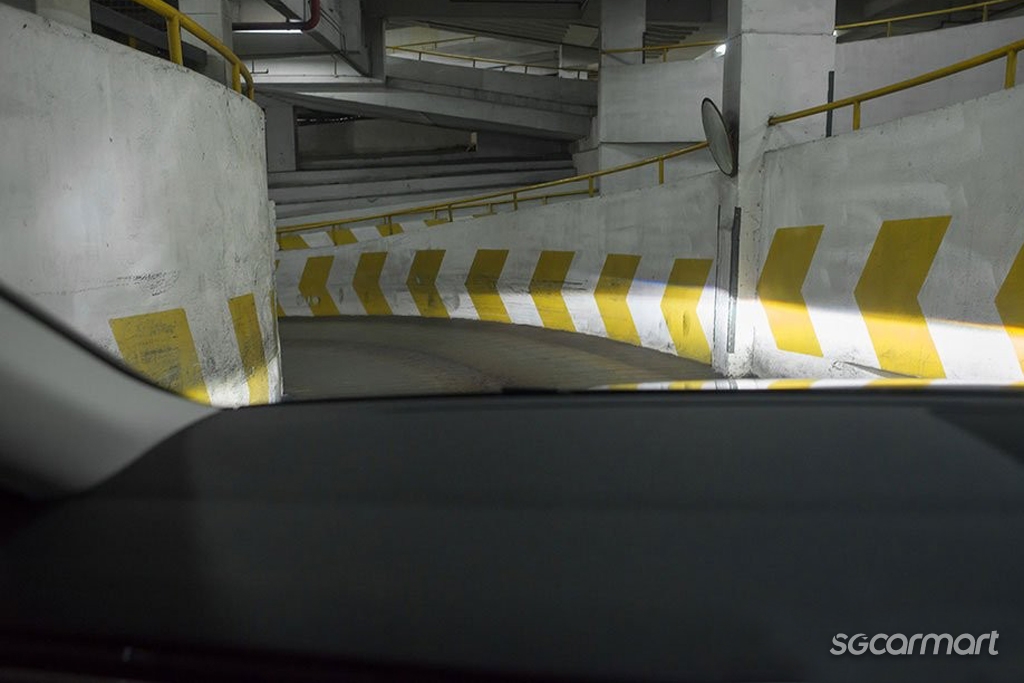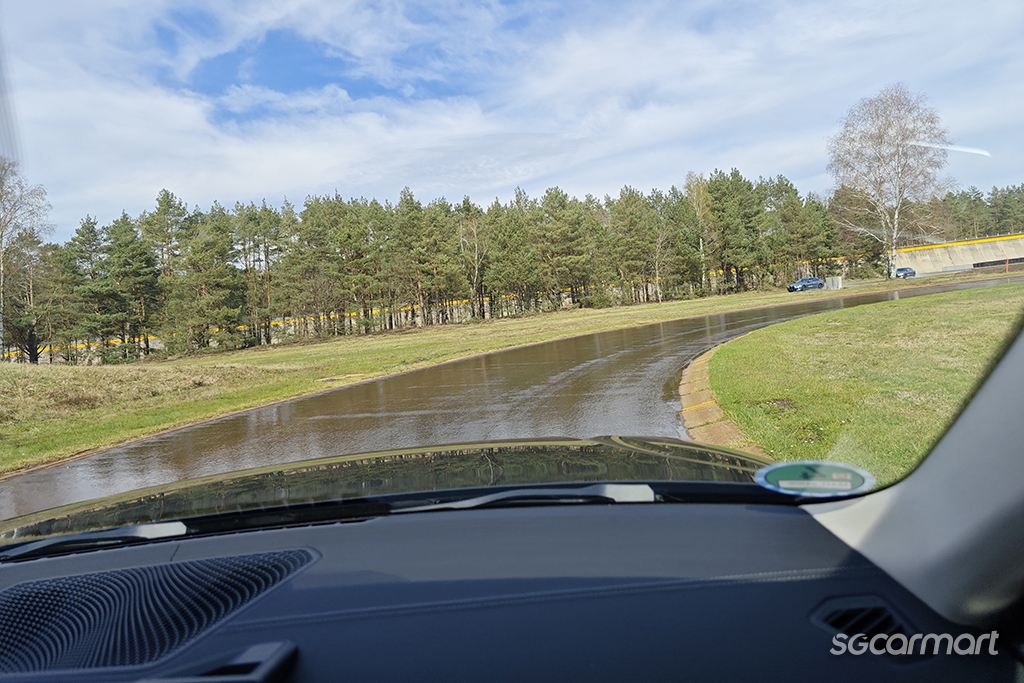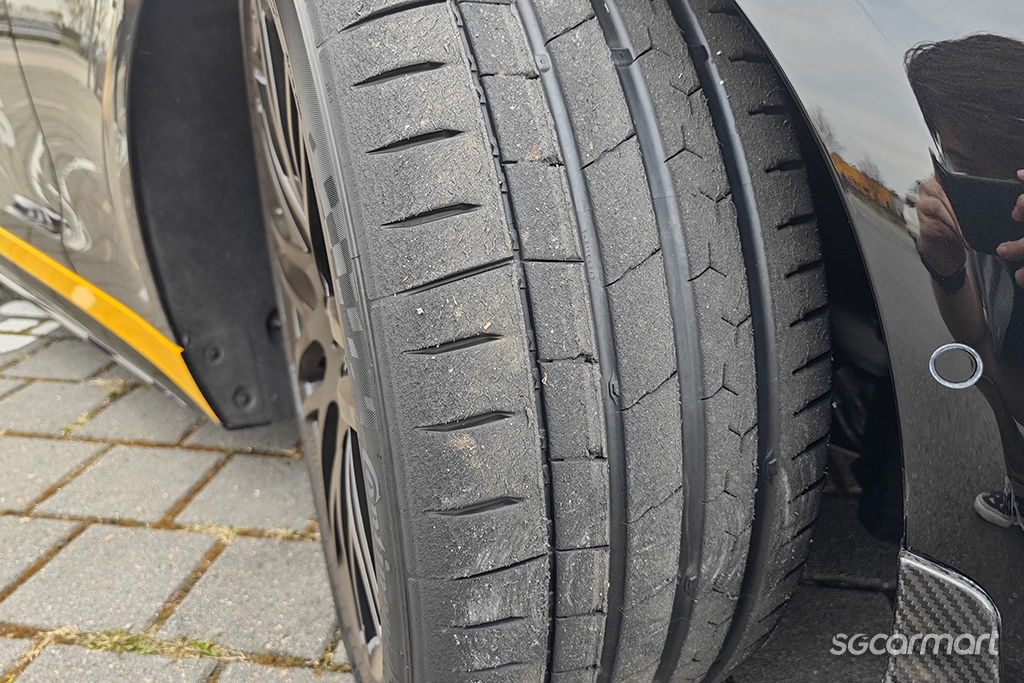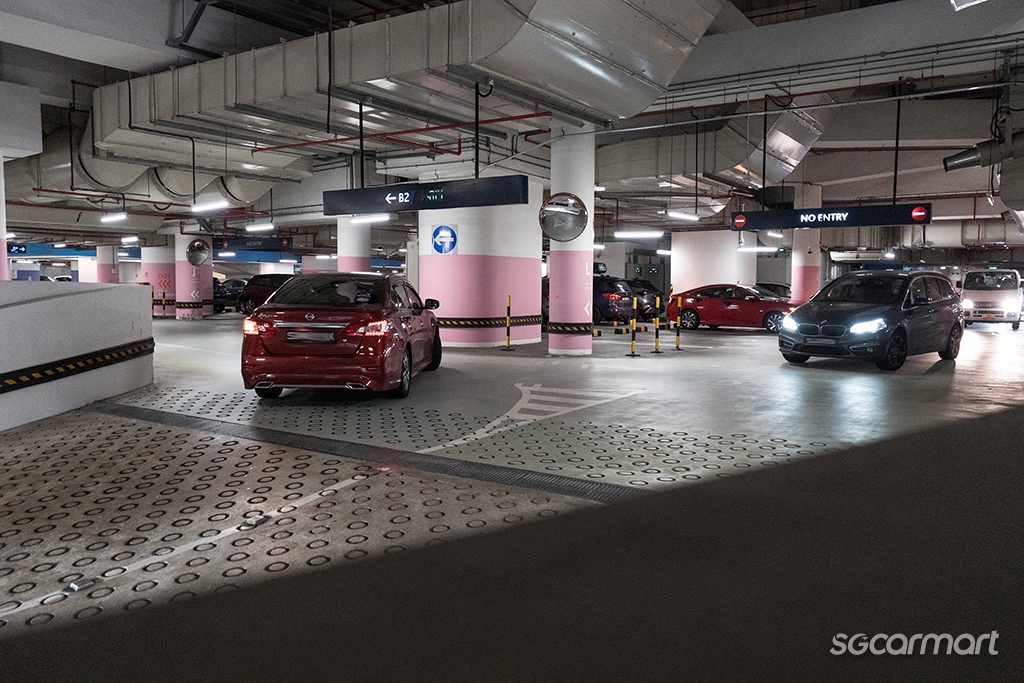Don't want to skid into the wall in a carpark? Here's how
15 May 2024|15,752 views
The hottest motoring news on social media right now is that several cars have ended up crashing into a wall towards the end of a downward ramp in Funan's carpark.
Clearly, heavy rain throughout Singapore has a part to play in creating the slick surface. However, the smooth, seemingly painted surface of the ramp was blamed for the literal slippery slope, with the affected drivers banding together to seek compensation from the mall's management.
Such accidents could be the result of several factors - the fact that it was raining, the slick surface, bald tyres, high speed, or how the driver reacted, they could all play a part. While we can't do anything about the first two factors, the other factors can be controlled and mitigated by our actions.
Learn from icy driving techniques and advices
Sometimes, driving on the wet, smooth carpark surfaces can feel like you are driving on ice, so let's just turn to icy driving advice and see what we can learn.
You can cross-reference multiple sites, blogs and articles and they'll all emphasise on the need to drive smoothly. To avoid breaking traction on the low-grip surface, you'll want to accelerate, brake, steer and even change gear smoothly - any sudden, jerky movement can easily cause the tyres to lose traction, sending the car into an uncontrolled slide. Smooth control is key to maintaining your car's traction on slick surfaces.
Keep your speeds low
Carparks are inherently tight and full of obstacles such as pillars, walls and kerbs - it's no place to be speeding. While you might be tempted to drive quickly so that you can snag the best lot, you really shouldn't.
A higher speed could cause the tyre's grip limit to be exceeded, resulting in a slide or loss of control. Add unpredictably smooth and slick surfaces to the mix and you have the perfect recipe for an accident.
And it isn't just that, the convoluted layouts of carparks and its ramps often result in massive blind spots. If you were to be blitzing around at speed, you likely won't be able to react in time if there's a car in the way, or just a slick patch towards the end of a ramp. Drive slow, and you'll give yourself the opportunity to react to unforeseen hazards.
Ensure your tyres and brakes are in good condition
Tyres play a huge part when it comes to keeping a car on the road. I've experienced first-hand what good tyres can do in wet conditions on my recent trip to Continental's Contidrom facility. By opting for quality tyres and ensuring their condition, you would have a better chance of staying control in adverse conditions.
Likewise, you'll want to ensure your car's braking system's condition to ensure that you'll be able to slow down and stop your car safely and reliably when you need to.
Drive slow, drive carefully and you'll be fine for the most parts
Not all accidents can be avoided, and in the case of Funan's carpark ramp, the combination of the slick surface and the downward curve was clearly a fatal combination for the cars involved.
But this incident only reinforces the notion to drive carefully and slowly in carparks, especially the ones that are known to have smooth cement, painted or epoxy-coated surfaces that could become extremely slippery when wet.
The hottest motoring news on social media right now is that several cars have ended up crashing into a wall towards the end of a downward ramp in Funan's carpark.
Clearly, heavy rain throughout Singapore has a part to play in creating the slick surface. However, the smooth, seemingly painted surface of the ramp was blamed for the literal slippery slope, with the affected drivers banding together to seek compensation from the mall's management.
Such accidents could be the result of several factors - the fact that it was raining, the slick surface, bald tyres, high speed, or how the driver reacted, they could all play a part. While we can't do anything about the first two factors, the other factors can be controlled and mitigated by our actions.
Learn from icy driving techniques and advices
Sometimes, driving on the wet, smooth carpark surfaces can feel like you are driving on ice, so let's just turn to icy driving advice and see what we can learn.
You can cross-reference multiple sites, blogs and articles and they'll all emphasise on the need to drive smoothly. To avoid breaking traction on the low-grip surface, you'll want to accelerate, brake, steer and even change gear smoothly - any sudden, jerky movement can easily cause the tyres to lose traction, sending the car into an uncontrolled slide. Smooth control is key to maintaining your car's traction on slick surfaces.
Keep your speeds low
Carparks are inherently tight and full of obstacles such as pillars, walls and kerbs - it's no place to be speeding. While you might be tempted to drive quickly so that you can snag the best lot, you really shouldn't.
A higher speed could cause the tyre's grip limit to be exceeded, resulting in a slide or loss of control. Add unpredictably smooth and slick surfaces to the mix and you have the perfect recipe for an accident.
And it isn't just that, the convoluted layouts of carparks and its ramps often result in massive blind spots. If you were to be blitzing around at speed, you likely won't be able to react in time if there's a car in the way, or just a slick patch towards the end of a ramp. Drive slow, and you'll give yourself the opportunity to react to unforeseen hazards.
Ensure your tyres and brakes are in good condition
Tyres play a huge part when it comes to keeping a car on the road. I've experienced first-hand what good tyres can do in wet conditions on my recent trip to Continental's Contidrom facility. By opting for quality tyres and ensuring their condition, you would have a better chance of staying control in adverse conditions.
Likewise, you'll want to ensure your car's braking system's condition to ensure that you'll be able to slow down and stop your car safely and reliably when you need to.
Drive slow, drive carefully and you'll be fine for the most parts
Not all accidents can be avoided, and in the case of Funan's carpark ramp, the combination of the slick surface and the downward curve was clearly a fatal combination for the cars involved.
But this incident only reinforces the notion to drive carefully and slowly in carparks, especially the ones that are known to have smooth cement, painted or epoxy-coated surfaces that could become extremely slippery when wet.























